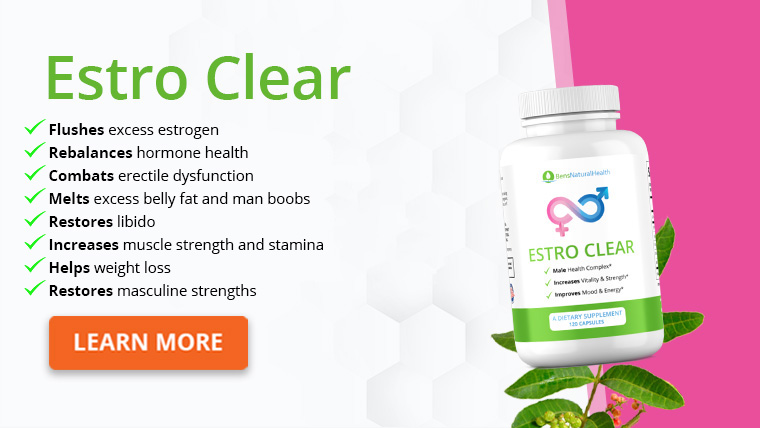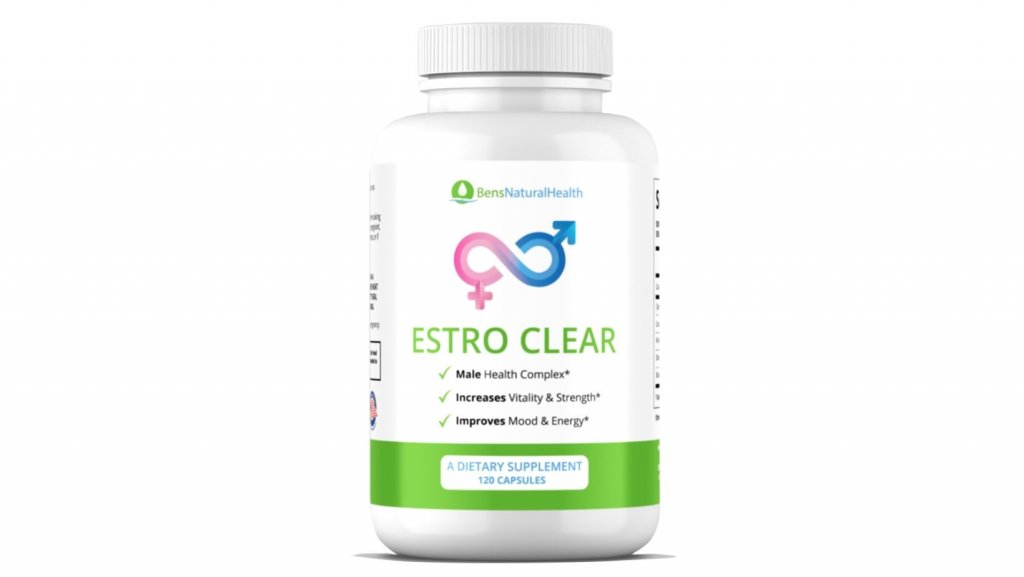Many people maintain a relatively flat stomach for most of their lives but begin to develop a layer of abdominal fat as they approach or pass the age of 50. This abdominal or visceral fat is often called a “spare tire” by its owners.
Insulin directs the body to move fats into cells. These fats are then used to produce energy. However, a poor diet and lack of exercise often cause the body’s cells to become less sensitive to insulin – a term called insulin resistance. As the body becomes more insulin resistant, it tends to store more fat in visceral layers around the abdomen instead of keeping it for energy use.
Both men and women encounter this effect. When it builds to the point where a “spare tire” “is noticeable around the belly area. This is sometimes called a hormonal belly. Men tend to encounter an increase in estrogen as well as a decrease in testosterone level around the same age as when a woman enters menopause.
Aside from promoting insulin resistance, this increased estrogen level in men adds to the risk of developing Benign Prostate Hypertrophy and increased male breast growth (Gynecomastia). As estrogen levels rise, belly-fat levels increase and become noticeable.
What is a Hormonal Belly?
Hormonal belly is a common slang term used by both men, women, and their doctors to describe the build-up of fat around the abdominal area. The build-up typically occurs around or after age 50. While excess fat accumulates all over the body, hormonal imbalances, cause excess fat to deposit itself around the abdominal area.
The human body accumulates fat when food intake exceeds the normal requirements needed for survival. Generally, fat is stored in cells for later use in producing energy. There are two different types of fat stored – called subcutaneous and visceral fat. The predominant fat is subcutaneous. It accounts for about 90 percent of body fat and is stored just below the skin.
The remaining 10 percent is called visceral fat and is stored in and around the abdomen and its internal organs. Research indicates that almost all fat cells are biologically active and secrete small amounts of hormones, including insulin. Visceral fat seems to be more hormonally active than subcutaneous fat. It increases inflammation processes and activity throughout the body.
As such, the hormonal activity of visceral fat is strongly linked to various diseases. Especially including diabetes, as well as increased insulin resistance and mortality.
Research has shown that visceral fat can interfere with testosterone production. This further exacerbates the storage of fat in the belly. Excess abdominal fat reduces testosterone production and is also associated with a rise in estrogen levels. Thus, the accumulation of visceral fat from weight gain leads to lower levels of testosterone and higher estrogen levels. Reduction of visceral fat via lifestyle and dietary changes is beneficial, especially for older men.

Understanding Fat Generation and Build-up
Control of fat deposits in humans is regulated by a hormone called leptin. This hormone is generated and released by fat tissue, and thus its level is directly proportional to the amount of fat in the body. Leptin signals the brain to alter food intake and control energy expenditure. Low levels send signals to increase food intake, and a higher level tends to decrease the appetite.
People that are chronically obese may have a congenital leptin deficiency. This can result in an uncontrolled, chronic need to increase food intake. Some researchers are studying the use of leptin injections for long-term appetite and weight control. However, to date, the results are not clear.
For people trying to lose weight, leptin can have a profound effect. Weight loss, especially a large loss, can trigger a substantial drop in leptin and subsequently induce a huge appetite and increased food intake. This makes it harder for dieters to lose weight and often puts a damper on their enthusiasm.
Since leptin is independently produced by fat cells, the amount circulating is directly related to the amount of body fat tissue. When an individual has an increase in fat mass over a period of time, leptin levels will increase. This causes increased appetite as well as additional accumulated fat deposits.Thus, the process becomes an endless loop. Increased food intake causes more fat deposits, which produces more leptin. This, in turn causes increased appetite and food consumption. Considering that most Westernized countries do not maintain ahealthy diet, or get sufficient exercise, people are getting fatter and less healthy worldwide. 1
Overweight people tend to have high levels of leptin. When the overweight or obese condition has been in place for years, they often develop a leptin resistance condition. Their brains no longer respond to high leptin levels to reduce appetite. This condition is similar to insulin resistance encountered by diabetics. Thus, over time, they tend to gain weight and increase their fat deposits continually, resulting in a slow but steady weight gain. Like obese people, they tend to have a tough time when trying to lose weight.
Men and Hormone Health
As men and women age normally, their hormone levels tend to readjust. This often causes an age-related imbalance in hormone levels. For women, it results in stopping the menstrual flow, commonly called menopause.
Many of the androgen hormones, like testosterone, DHT, and androstenediol, tend to decline for men. Meanwhile, feminine-based hormones, estradiol, estrone, and estriol, tend to rise. These hormones are grouped as part of a family known as the sex steroid hormones.
Both men and women produce and use all of the hormones in this family. Leptin, discussed above, is not part of this family but has profound effects on almost all of its members. The definition of male and female hormones, however, is quite arbitrary. Both men and women carry the same set of hormones, but the balance between them is gender-based. Men have higher levels of androgens and women higher levels of estrogens.
Hormones carry messages to virtually all of the body’s organs and help regulate many bodily functions. Patients and their doctors tend to put a high value on actual hormone levels. However, in most cases, the balance between hormones is more critical than their actual values.
As men age, it is almost inevitable that thoughts turn to testosterone. For some men, low testosterone levels cause significant problems, not only with sexuality but also by setting the stage for some serious health issues. But testosterone is only one player in this complicated orchestra. It is most important for all the bbody’shormones to be in balance with each other. When this balance is disturbed, symptoms and disease often follow.
Progesterone and Dehydroepiandrosterone (DHEA) are precursors of testosterone. They are used by the body to produce and balance testosterone. Progesterone was once thought to be a specifically female hormone, with little effect on the male prostate, but quite the opposite is true. DHEA, on the other hand, was once banned as an anabolic steroid.
Both DHEA and Progesterone tend to decline with advancing age. Their relationship as precursors to testosterone tends to result in low testosterone levels seen by some men. Low DHEA levels contribute to visceral fat deposits as well as low testosterone levels.
Progesterone, on the other hand, tends to stabilize prostate growth and function. The prostate is rich in receptors for most hormones in the sex steroid hormone family.
In addition to its own properties, progesterone has profound effects on the availability of all the other sex hormones. A progesterone deficiency inherently results in a deficiency of some of the others. As a man ages, his progesterone production decreases. At the same time, he may also experience a decrease in his level of free testosterone. Adding to the issue is that more of his available testosterone may be converted to DHT and estradiol. 2 The end result is estrogen dominance.
Many recent studies have found that both low levels of DHEA, progesterone, and testosterone, coupled with high estrogen levels, correspond directly to prostate problems. Many studies have linked imbalances in androgen to estrogen ratios to the development of both breast and prostate cancer.
Thus, the age-related drop in progesterone, DHEA and testosterone, and the rise in estrogen, sets the stage for an increased risk of prostate problems. Coincidentally, excess estradiol is also known to be a key player in abnormal breast tissue proliferation. This is one reason older men frequently have enlarged breasts. Aside from normal aging, there are many lifestyles and nutritional issues that can cause additional estrogen production.
For example, excess fat tissue produces estrogens as well as leptin. An overweight or obese man can have significantly higher estrogen levels than a man of normal weight. Alcohol consumption, smoking, and many other environmental factors can exacerbate age-related hormone imbalances.
The significance of the drop in progesterone and increase in the ratio of estrogen to progesterone cannot be ignored. Studies indicate that progesterone is mildly protective against prostate cancer growth, while estrogens have an opposite effect.
How to Improve Hormonal Balance
If there is one single result that summarizes the old age “you are what you eat” “it is that of a hormonal belly. Most Americans follow the standard American diet (SAD) , adding additional bodyweight slowly as the years go by.
In their later years, when illness and debility tend to start getting more attention, they turn to fad diets and supplements that claim to reverse the damage done by a lifetime of poor nutrition. These methods invariably fail! It is only when the person recognizes that damage done over many years cannot be reversed in a few days that there is hope for recovery.
Proper dietary habits and good nutrition can reverse the detrimental effects of a hormonal belly. Yet, if it took 25 years to cause the deterioration and imbalances, one would not be able to fix them immediately. By following a realistic approach, results can be noticed within a few weeks.
Hormonal balance can be improved by following a general dietary and lifestyle approach and avoiding processed foods as much as possible. Especially highly processed carbohydrate-laden foods like breads and cake.
Three issues that contribute most oft excessive visceral fat build-up are:
- Insufficient or incorrect protein consumption. Adequate protein is extremely important. Many folks tend to get most of their food calories from sugar-laden and highly processed carbohydrates. In addition, their protein calories are often obtained from animal sources, like red meat.
To minimize or reduce visceral fat build-up, national guidelines suggest a daily intake of between three-quarters to one gram of protein per pound of body weight. Thus, a 150-pound person should be in the range of about 75 to 150 grams of protein per day.
While the guidelines do not specify the type of protein, plant-based protein is generally superior to animal-based. For example, a high-quality beef steak like a filet is often judged for quality by its amount of “marbling.”
This marbling represents the storage of fat in the animal′s tissue. Most mammals store excess estrogen in their fat tissue. Therefore, a heavily marbled steak is equivalent to dosing with the female hormone estrogen. This is counterproductive for a man trying to avoid prostate problems or a woman trying to overcome estrogen dominance.
- Avoid sugar and refined carbohydrates – Unfortunately, it is challenging for a person living in a Westernized country to avoid refined carbohydrates. Added sugars in processed food are a staple of the food industry. A good rule of thumb is to try to shift the diet to natural foods and organically vegetables. Also consider plant-based instead of animal-based protein.
- Insufficient exercise – many folks with excess visceral fat and a hormonal belly get that way after long periods of inactivity. The CDC recommends that healthy adults get about 150 minutes of exercise per week.
This can be split up into smaller periods of exercise, alternating between aerobic conditioning and strength training. Several studies have shown high-intensity interval training to be valuable. 3
Supplements That Can Help
- DHEA – is both a natural hormone and a popular supplement that is a precursor to other hormones in the sex steroid hormone family. It helps to produce estrogen, progesterone, and testosterone. Studies show it can also increase bone density, decrease body fat, especially visceral fat, and help balance other hormone problems.
A growing body of evidence suggests that DHEA can be a valuable dietary supplement for older adults, especially the overweight or obese. DHEA is secreted by the adrenal gland and is a precursor to other hormones. 4
- Progesterone – is also a natural hormone and popular supplement. Originally thought of strictly as a female hormone, studies have shown that the human prostate is very sensitive to it.
Progesterone inhibits an enzyme called 5-alpha reductase that converts testosterone to dihydrotestosterone (DHT). Excess DHT binds to receptors on the prostate, potentially increasing the risk of prostate enlargement and/or prostate cancer. Dr. John R. Lee, in his many books, believes that it is excessive exposure to estrogen with low levels of progesterone that is the primary cause of BPH and prostate cancer. 5
- An Internet search for “supplements for hormonal belly” “returns nearly five million pages. Undoubtedly, the vast majority are of dubious potential help and, in some cases, may actually cause harm.
Aside from the above two hormone supplements, the most powerful addition to the diet is to increase the amount of plant protein at every meal. Plant protein is available a concentrated powder that can be added to a beverage, and virtually all seeds and nuts have high protein content.
Keep in mind the fact that it may have taken years for this condition to develop, and remedying it will not happen in a week or two.
Ben’s Estro Clear
Estro Clear is an estrogen blocker for men that contains six natural, clinically proven ingredients to help reduce excess estrogen, restore hormonal balance, and regain masculine traits.

It can help your body flush excess estrogen, restore normal testosterone levels and support healthy weight loss.
Conclusion
The standard American diet (SAD) is the most significant reason for most of the health dysfunction seen in Western countries. This coupled with the fact that media advertisements typically promulgate the view that a single supplement or medication will fix all of one′s problems.
Hormonal imbalances, such as those that contribute to increased abdominal fat, are reversible. However, the public, demanding an instant fix, often never allows sufficient time to correct a dysfunction. A hormonal belly does not appear after a single day of dietary indulgence but is likely over many years, perhaps even over a lifetime.
Eliminating a hormonal imbalance will go a long way to eliminating some of the visceral abdominal fat. It will also be a major promoter of better health and lower the risk of many serious illnesses.
Belly fat or hormonal belly is just one symptom of a serious dietary mismatch. In most cases, it is due to an overabundance of carbohydrates and insufficient protein in the diet. This, coupled with a sedentary lifestyle and lack of exercise, is the cause of many premature deaths.
Excess belly or visceral fat has been linked in many studies to shortened life. People with excess visceral fat tend to be high on the list of heart attack and stroke patients. An Internet search for eliminating belly fat quickly results in millions of responses. From reliable medical sources to instant cures from hucksters looking to cash in on the overweight. Patience is key. Keep in mind – if it took several years to grow that belly, it′s not going to go away in a week or two.






